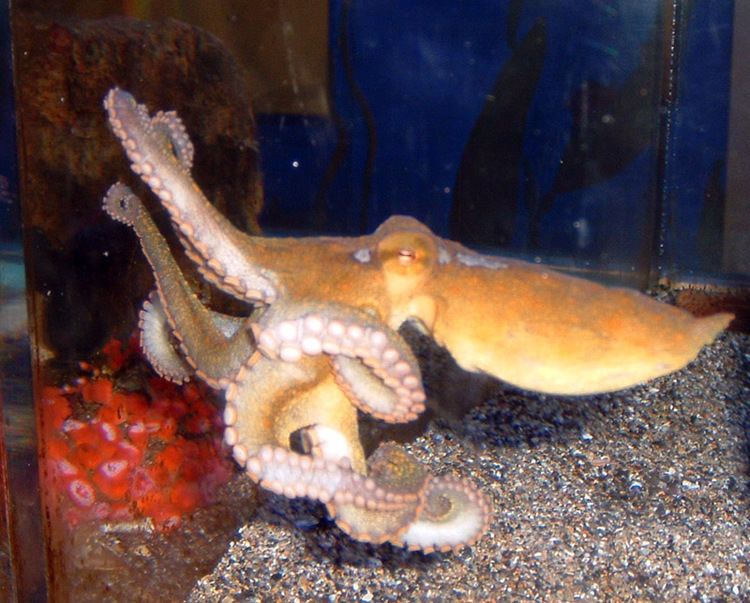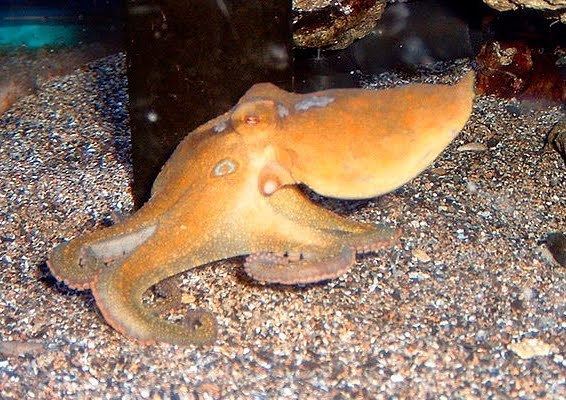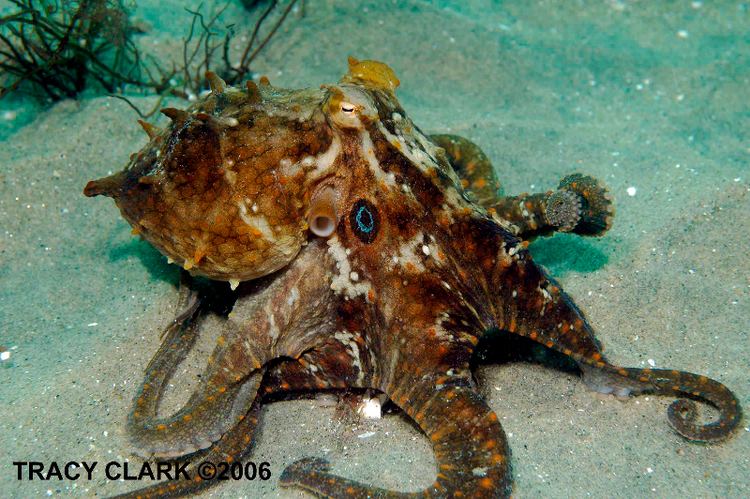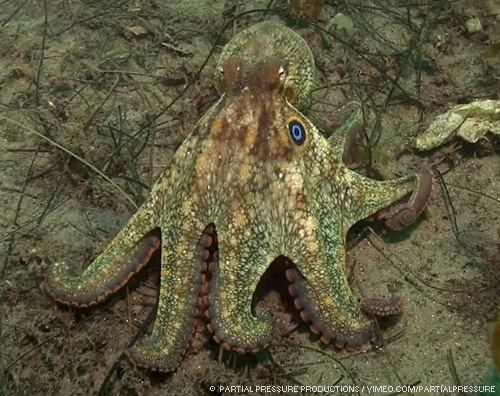Order Octopoda Scientific name Octopus bimaculoides Rank Species | Family Octopodidae Subgenus Octopus Higher classification Octopus | |
 | ||
Similar Octopus, Cephalopod, Octopus bimaculatus, Molluscs, East Pacific red octopus | ||
The California two-spot octopus (Octopus bimaculoides), often simply called a "bimac", is an octopus species native to many parts of the Pacific Ocean including the coast of California. One can identify the species by the circular blue eyespots on each side of its head. Due to their friendly temperament and relative hardiness, most experts consider them the best pet octopus. Bimacs usually live to be about two years old. They are closely related to Verrill's two-spot octopus (Octopus bimaculatus). In 2015, the genome was sequenced.
Contents

Range

Despite its common name, O. bimaculoides can be found across a very large natural range, including the eastern Pacific from the mid-California coast to Mexico, and the Indo-Pacific from East Africa to American Samoa, north to Japan, and south to the Great Barrier Reef.
Habitat

This species of octopus is found in the intertidal and benthic zones, from the low tide to subtidal depths of about 20 m (65 ft). It prefers sandy substrate and caves of rock or debris for hiding. It tolerates a wide temperature range (at least 60-80 °F), though it prefers 65-72 °F.
Description

O. bimaculoides reaches a mantle size of 7 inches (17.5 cm) with arms to 23 inches (58 cm). Not usually heavily textured, it has several common colors, such as grey with yellow splotches, and uses highly developed crypsis (camouflage or color-changing to match the environment).

Octopuses achieve color change in part by chromatophores, iridophores, and leucophores; all are structures of the skin in increasing depth. Chromatophores are elastic pigment sacs with muscle fibers attached by which they can expand and contract. The leucophores are important because they allow for the reflection of white light and consequently allow the skin to reflect wavelengths of light which are prevalent in their habitat and produce disruptive patterns. The other aspect to cephalopod camouflage is the brain, which contains nerves coated in chromatophore fibers, controlling coloration patterning.
Distinctive features

This octopus gets its name from the false eye spot under each real eye. The eye spots are known as ocelli. In O.bimaculoides, the ocellus is an iridescent blue, chain-link circle set in a circle of black.
Lifespan
These octopuses live one to two years. The end is signaled by egg-laying in the female or senility in the male.
Diet
Adults feed on clams, mussels, small crabs, crayfish, and snails including Kelletia kelletii. Hatchlings feed on amphipods or mysid shrimp.
